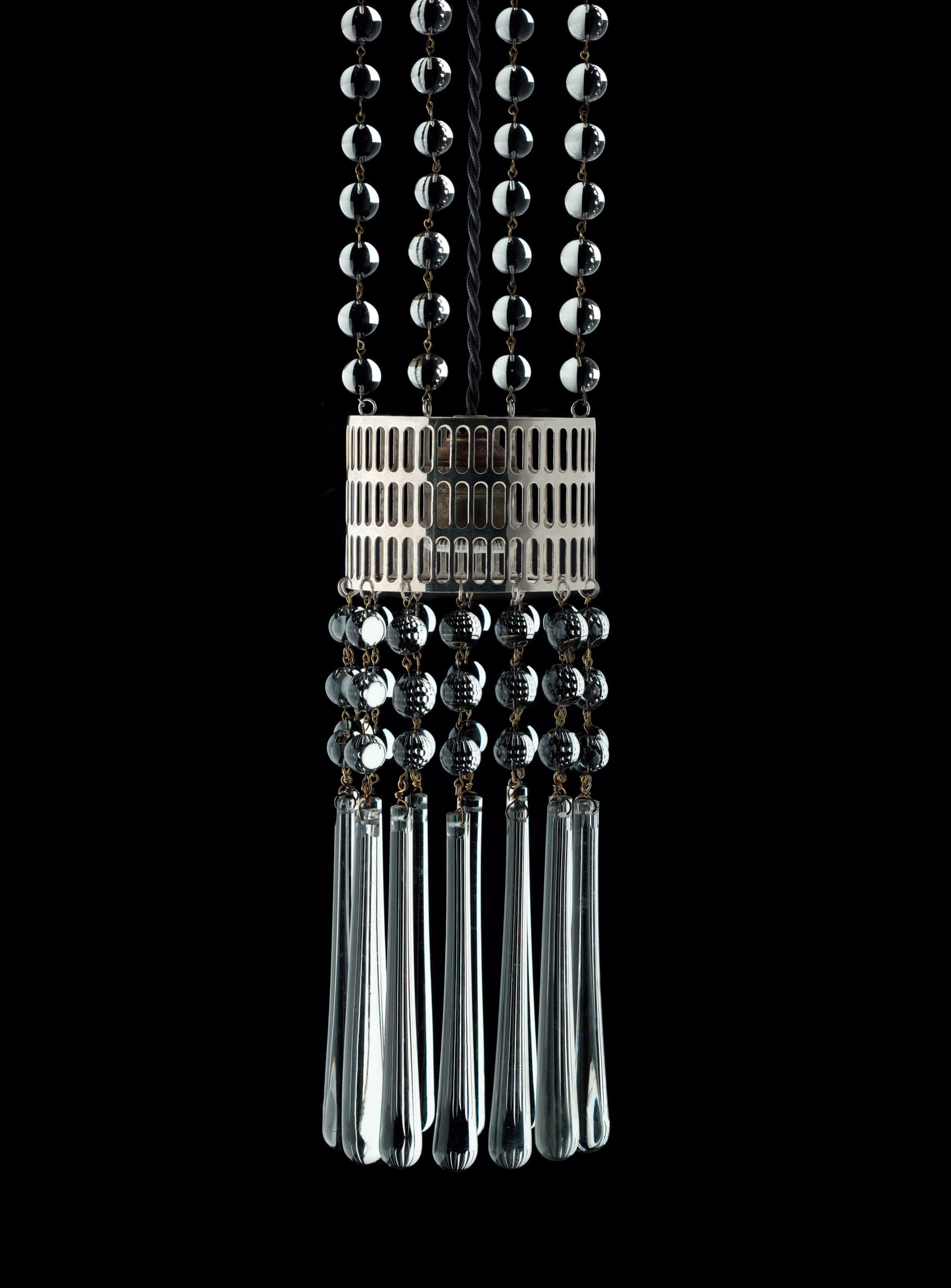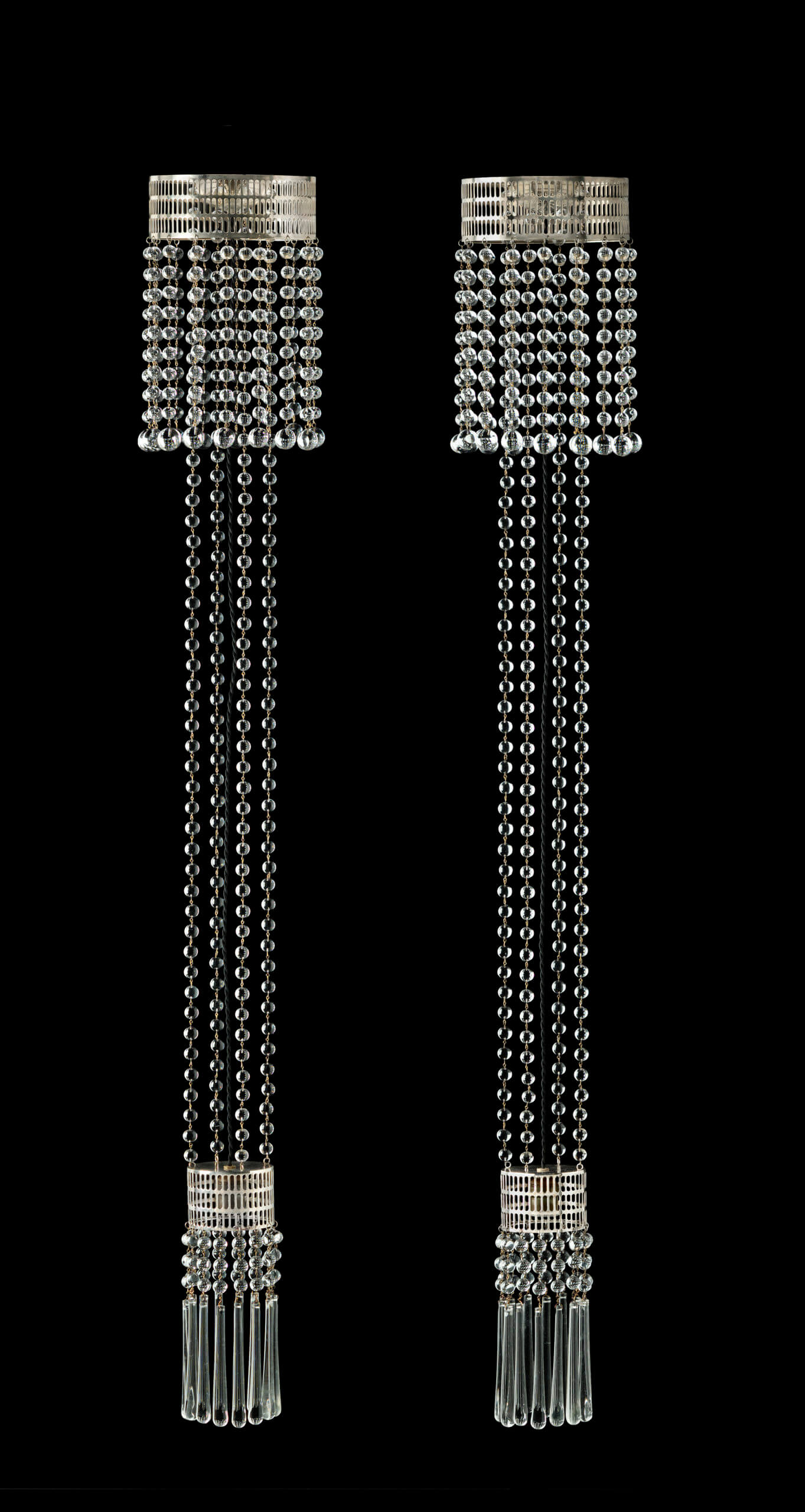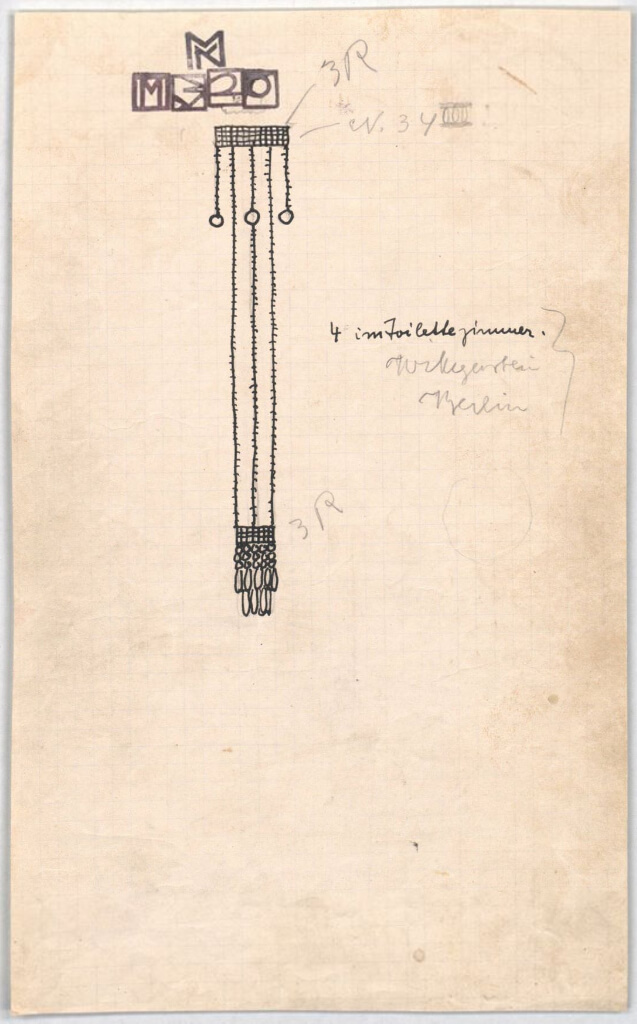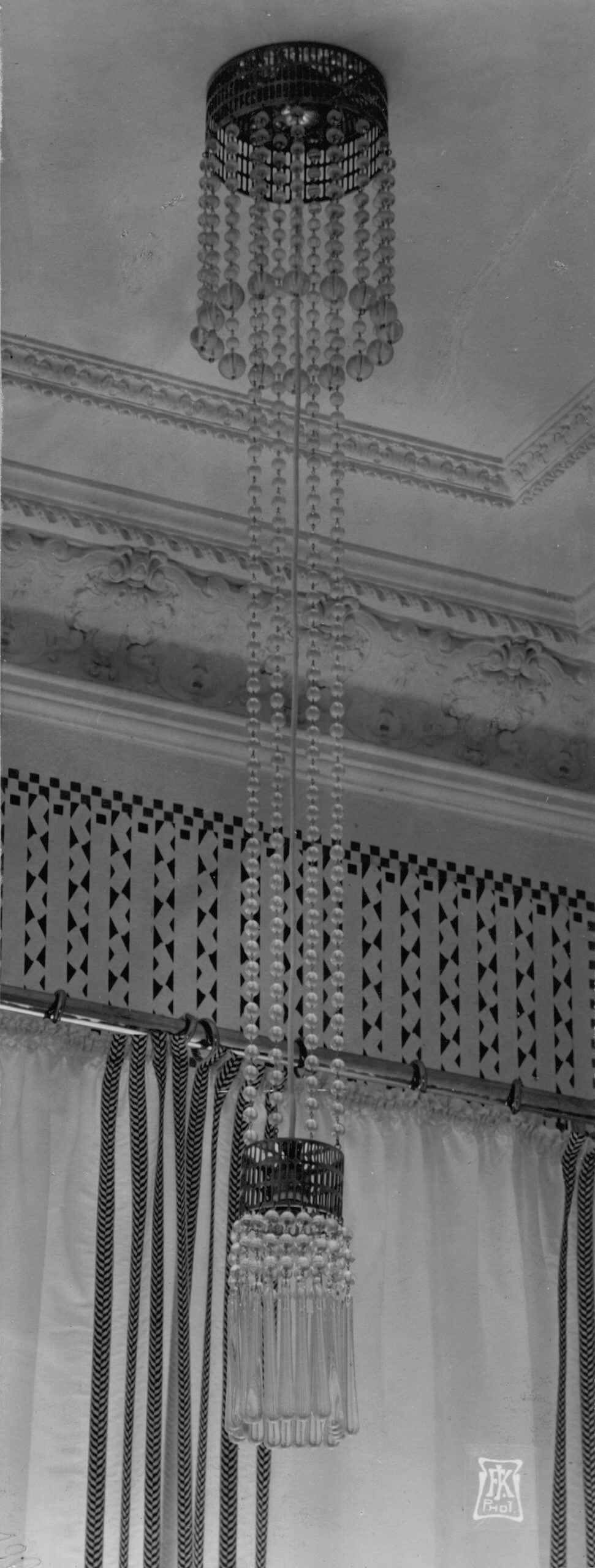
Made for
The Stonborough-Wittgenstein apartment in Berlin
Year
1905
Material
Alpacca, glass bowls
Dimensions
H. 146 x Diam. 21 cm
Executed by
The Wiener Werkstätte
Louvre Abu Dhabi – Naissance d’un Musée, Louvre, Paris, 2013
MAK Archive Number: WWF 102-78-2
Asenbaum. P, Haiko. P, Lachmayer. H And Zettl R., Otto Wagner. Möbel Und Innenräume; Salzburg and Vienna 1984, P. 190, Fig. 242
Louvre Abu Dhabi – Naissance d’un Musée, Louvre, Paris, 2013, P. 273

In 1905 Koloman Moser designed four chandeliers, executed by the Wiener Werkstätte, for the guest room in the apartment of Margaret and Jerome Stonborough. The chandeliers were attached in the four corners of the ceiling and, next to the vertical stencilled pattern of the wall, are the sole artistic reinforcement in generating a contemporary feeling for space in the provided late nineteenth-century shell of the room. They are configured as overtly vertical spatial elements that let light flow downwards, their positioning on the four corners of the ceiling making them form an imaginary interior space peculiar to them. It is not without reason that the chandelier itself evokes associations with textiles. One is abruptly reminded of some kind of monumental gimp work – a tassel hanging on long cords. This also betrays its aesthetic and technical genesis, which reaches back into the early 1890s. In 1892 Otto Wagner – in whose architectural bureau Moser worked during the late 1890s – designed one of the first suspended electric light sources directed downwards for the boudoir of his own house on Rennweg. He has the drop-shaped glass shades covering the light bulbs hang on long gimp cords from the ceiling. The glass shades themselves are placed in tassels.
Moser’s chandelier concept is nothing other than a further development of this idea and its transportation into the material of glass, though with additional reminiscences of classicist hoop chandeliers. Similar to a braid, the fringes – strings of glass beads – hang on a perforated metal hoop. More strings of glass beads, this time much longer, fall out of a concentric circle placed behind and held by another perforated metal hoop. This holds the actual fitting with the glass bulb, which is veiled by a kind of curtain made of strings of glass beads and canes – the former tassel.
CWD
Archives

